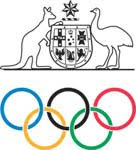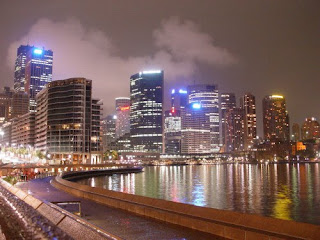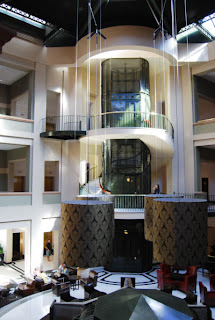 One thing that many people who are on a migration to Australia would probably want to know is all about the country's national dress. After all, it seems that almost all countries have their own national costumes, just take a look at the international beauty pageants for proof. However, in the case of Australia, this one is going to be a rather complicated topic.
One thing that many people who are on a migration to Australia would probably want to know is all about the country's national dress. After all, it seems that almost all countries have their own national costumes, just take a look at the international beauty pageants for proof. However, in the case of Australia, this one is going to be a rather complicated topic.
The truth is, Australia actually doesn't have an officially designated national dress. This is mainly due to the diversity of the Australian culture. Because of the amount of immigration that has been happening in the country ever since its early history, the current Australian population is composed of people with a wide variety of ethnical backgrounds. Thus, it would be quite difficult, if not impossible to pinpoint a specific dress that would encompass Australia's culture and be called the national costume.
However, despite the lack of an officially recognized national dress, the Australian people has come up with a clothing style that is uniquely their own. And though this one doesn't really fit in with the idea of a national costume in the stricter sense (with all the historical backgrounds and everything), it actually does fit in well in defining something uniquely Australian.
There are actually two types of clothing that are associated with the Australian culture. One is referred to as bushwear, while the other is called surfwear. You'll find out later what these two are really. However, one thing that you will likely notice is that both of them are fitted for the outdoor life, which is what a large part of the Australian culture is all about. Also note that Australians fit their dress style accordingly to the country's climate, which is rather hot. This is why loose shirts and shorts play a prominent part in the Aussie clothing style.
Now we get deeper into the above mentioned bushwear and surfwear. Bushwear is basically clothes that are worn when going into the forests. This type of clothing actually go back to the early periods of exploration in the country. The most common form of bushwear are shirts and shorts. On the other hand, surfwear is anything that you wear while in the beach.
One remarkable thing about the Australian dress style is its ability to combine aspects of of both styles of dress to come up with something that is even more functional and fit to the Australian lifestyle. This you can see in the predominance of shorts in the local apparel. In some cases, Australians can actually go into the water straight from the outback and with their clothes on.
And the evolution of the Australian clothing style does not end here. More and more influences are being added to the national style, such as Aboriginal influences. These makes it even more uniquely Australian.
Image source: google.com
The Australian Dress Style
Australians' Love Of Sports Showcased In Winter Olympics
 For many Australia visas holders, the country is traditionally seen as a hot country. In fact, beaches and deserts are often the most common images that is evoked in people's minds whenever Australia is brought up in the discussions. However, not many people know that Australia is, in fact a regular participant in the winter Olympics.
For many Australia visas holders, the country is traditionally seen as a hot country. In fact, beaches and deserts are often the most common images that is evoked in people's minds whenever Australia is brought up in the discussions. However, not many people know that Australia is, in fact a regular participant in the winter Olympics.
You might still probably be thinking how they are going to train in all those desert areas. Actually, contrary to the popular notion that Australia is purely a desert, there are actually places in the country suited for training for the winter Olympics. For instance, the southern regions of Victoria, South Australia and New South Wales have a generous amount of snow during the winter months to provide practice grounds. Further down, the mountains of the state of Tasmania are ideal places for outdoor winter sports, like skiing.
And if that is still not enough, Australian athletes travel the world over to find other places to train in. One of the most popular of these is the town of Whistler in the British Columbia, Canada. This little town is very ideal in its winter environment, that many athletes travel here from Australia to train. British Columbia is, in fact, the host of this year's winter games held in February.
Though Australia didn't fair that much this year (they managed to win three medals), their participation was very well received. It was, in fact, considered a pretty good showing for a country that is traditionally considered not to be a strong contender in the winter games.
The event also showcased another interesting facet of the Australian culture, the people's love for sports. In fact, Australians are very much into sports that it has become a big part of their daily lives. Thus, you must not be surprised that every Australian that you will meet will have at least two to three kinds of sports that he regularly plays.
And there are actually very plenty of sports activities that one can choose from in the continent. There are the traditional games, like basketball, soccer and swimming (not surprising, since Australia is surrounded by water). Then there are indigenous sporting events, like Australian rules football and boomerang throwing competitions (yes, even the humble boomerang has its own sporting event). What more, Australians love to try new stuff, so more sporting events are being introduced in the country yearly.
And even those who are not active participants are still avid sports fans, in this case, as spectators. In fact, the topmost favorite topic of any conversation here would still be about sports.
Image reference: http://www.owia.org/files/41/aocweb.jpg
Some Interesting Facts You Should Know About Australia
 Most, if not all, of those people applying for an Australian travel visa are definitely serious in getting their papers approved. Thus, they are bent on memorizing all the basic facts about the country that they can read. But of course, traveling to Australia isn't all about the details that you will find in the books and brochures. Here are some fun facts that will make you even more interested in visiting the land down under.
Most, if not all, of those people applying for an Australian travel visa are definitely serious in getting their papers approved. Thus, they are bent on memorizing all the basic facts about the country that they can read. But of course, traveling to Australia isn't all about the details that you will find in the books and brochures. Here are some fun facts that will make you even more interested in visiting the land down under.
For the faint hearted, it would be a good idea to be warned. Australia is home to about 1500 different species of spiders. Don't worry though, as most of them are relatively harmless little creatures. However, this one should worry you a lot. According to statistics, an average Australian accidentally swallows three spiders every year.
And since we are on the topic of animals, here are some more interesting tidbits about them. Australian sheep actually outnumber Australian people. There are well over 120 million sheep in the country, as compared to only twenty million Aussies living here. And if you think that it is only in the Arabian deserts that you will see camels, Australia, in fact, has the largest population of the one humped variety of these desert animals.
And tourists will definitely be delighted to know some interesting facts about the places in Australia that they would want to visit. Once of such places is Uluru, in the Northern Territory, which many people marvel at the size of. However, you will likely be surprised to find out that the thing that you see above ground is actually just a small portion of it. Most of the rock is actually buried underground.
And would you believe that Australia actually has a hospital for bats? The Tolga Bat Hospital is located in the town of Atherton near Cairns and caters to hundreds of these flying creatures that they rescue daily. And if you want something a bit more worthwhile to do during your vacation, you can actually sign up, as they are recruiting volunteers to help care for and feed these creatures. Don't worry though they're not looking for blood to feed the vampire bats (which are actually plenty in the area).
And as for the people, you will also be surprised to know that the Australian city of Melbourne actually has the second largest Greek population in the world, following only Athens, of course. And to cap this little trivia sheet, you probably have already known that Australians do love beer a lot. But did you know that Bob Hawke once held the title for the fastest beer drinker? He downed 2.1 pints in just under 12 seconds. Who's Bob Hawke? Well, he is no less than the 23rd Prime minister of Australia.
Image reference: http://conference.fidi.com/images/Australian_Facts_6.jpg
What It's Like Living In New South Wales
 When getting an Australian immigration information, one of the places that many people would want to know more about is the state of New South Wales. Indeed, there are so many people around the world would want to move into this part of Australia. And so, for all of those wanting to know, here's an overview of what it's like living in there.
When getting an Australian immigration information, one of the places that many people would want to know more about is the state of New South Wales. Indeed, there are so many people around the world would want to move into this part of Australia. And so, for all of those wanting to know, here's an overview of what it's like living in there.
One of the things that many feel attracted to New South Wales is the state's climate. Unlike that of the rest of the mainland, New South Wales, or at least the eastern portion of it, enjoys a more temperate climate. On the other hand, though the western side is also semi arid, the temperature here is still very much bearable as compared to the country's central regions.
The climate is also ideal for all the outdoor activities that the state is known for. Beaches are perhaps the most popular attractions of the state, and there is definitely plenty of these along the coast. Byron Bay is probably the most popular destination for both locals and foreigners in the area. There are also countless outdoor activities that you can do in the several nature parks that dot the state.
The state capital of Sydney is the central hub of activities in New South Wales. It is yearly visited by more that a million tourists coming from different parts of the world. There are also several world renowned destinations in the area. These includes the famous Sydney Opera House and the Sydney Harbor Bridge.
One thing that is remarkable about the state is that New South Wales has a very extensive transportation system. There are actually several ways that you can get around the state (aside from your car). Buses and trains are the main modes of transportation that link the several cities and towns that comprise the state. Within the cities, especially that of Sydney, there is an extensive system of tracks that connect the major districts. On the other hand, Sydney is also an important hub for international air travel, with Sydney Airport being a main landing point for flights.
One thing that you do need to take note about living in the state is the price of real estate. New South Wales is actually one of the higher states in terms of real estate cost. However, it is comparatively lower than, say, Victoria. The prices are the highest in the cities, especially Sydney. However, the costs go down as one moves into the outlying areas.
Image reference: http://blogs.statravel.co.uk/journal/region_images/australia_new_south_wales_sydney_harbour.jpg
Easy Tourist Accommodations Tips
 Finding a place to stay for the night is often one of the problems that many Australian temporary visa holders often have to deal with in their vacation. Especially in the peak months, rooms are often fully book already. However, with a few simple reminders, you can easily solve this one without having to shell out a lot of cash.
Finding a place to stay for the night is often one of the problems that many Australian temporary visa holders often have to deal with in their vacation. Especially in the peak months, rooms are often fully book already. However, with a few simple reminders, you can easily solve this one without having to shell out a lot of cash.
One of the easiest ways to avoid having to go through all the hassle of lining up in the reception counter is to simply book your accommodations way ahead of schedule. Most hotels in Australia actually allow for reservations and bookings through the internet, so you can simply sign up for them when you are still planning your vacation. One thing that you need to take into mind is that some hotels will require you to make a down payment, while others will let you make the reservations and settle the bills later.
This tip can also be very useful if you plan on going to different cities during the duration of your vacation. Book a hotel in every city that you plan to go to so that you can have accommodations ready when you arrive there. To make things even much easier, it would be a good idea to plan your route well so that you can choose the hotels that will be nearest to the spots that you plan to head to.
In case you do end up with all the major hotels fully booked, then you need to find other alternatives. Smaller hotels in the suburbs often are a good choice, though they don't have all the accommodations provided by the major ones. Inns are also another favorite among tourists. These are very accessible, since most dot the roads that cross between cities. They are also rather cheap, costing only less than a hundred dollars a night.
For those who have friends in Australia, you can remove accommodation costs altogether by simply staying with them during your vacation. They can even be generous enough to take care of all your other needs for the duration of your stay. Do remember though, that you still need to share even a little in the expenses as a sign of courtesy.
And if you are still worried about the accommodation bills, you can try a few things to cut down on your expenses. One of these is to simply limit your use of room service, as hotels do charge a lot for these. Also, some hotels collect extra charges for additional use if small items like toiletries, so it would be a good idea to bring your own set.
Image reference: http://www.sydney-australia.biz/accommodation/graphics/australia-hotels.jpg
Sailing To Australia In The 1800's
 For many people thinking of immigration, Australia's history is a must to learn in order to better appreciate the country. And one of the most interesting aspect of Australia's history is how Europeans first arrived to its shores. You will find here that the journey was not easy as it seems today.
For many people thinking of immigration, Australia's history is a must to learn in order to better appreciate the country. And one of the most interesting aspect of Australia's history is how Europeans first arrived to its shores. You will find here that the journey was not easy as it seems today.
During the early 1800's, the only means of getting into Australia is by the seas. And, compared today, travel through this route was far from quick. A large ship using only sails (which was the only means of propulsion back then) can make the journey from the United Kingdom to Australia in just over four months in calm weather. However frequent changes in the weather can set this back to a year or so. Faster and smaller ships can usually travel in at least half the time, however this is still nowhere near the one month time that it takes modern ships to do so.
Aside from the weather, another reason that the trip takes too long is the difficulty of navigating towards Australia. Unlike today, where many ships are equipped with modern tools, such as radars, GPS and computers, ships back then have to rely only on the skills of their navigators in order to find the easiest path towards Australia. Thus, it is not uncommon for many ships during those times to get lost and wrecked in some far flung island.
Because of the long journey, life at sea during this period is not easy for sailors. Often, the journey take too long that they end up using up their supplies even before they arrived in Australia or to the nearest resupply points in their route. Thus, they would usually resort to unconventional methods, such as using their clothes for food (these stories are actually true) in order to survive.
Living and hygiene conditions in those journeys were also often less than favorable. And as the main priority was often focused on maintaining the ship in one whole piece, these are further neglected as the journey goes on. Passenger safety is also often overlooked, and many are cramped into small cabins to save space. Thus, disease easily spread to many people and often, some don't make it into Australia, as they die during the journey.
Conflicts among the people on-board are also a major problem for travelers during those times. And because of the length of the journey, these can usually escalate into worse situations. Some of these even end up stalling the ship's journey altogether.
This is but of the distant past already. However, it is a constant reminder that the route that Australia took to become the nation that it is today is not always a calm one.
Image reference: http://www.plyc.com.au/history/canowie.jpg
A Brief History Of Travel To Australia
 For many thinking of immigration, Australia is one of the most common places that comes into mind. In fact, there are thousands of people who travel and settle to the country yearly. However, this wave of immigration into the country is not a modern event. The truth is that it is going on for centuries now.
For many thinking of immigration, Australia is one of the most common places that comes into mind. In fact, there are thousands of people who travel and settle to the country yearly. However, this wave of immigration into the country is not a modern event. The truth is that it is going on for centuries now.
The first immigrants to Australia were the Aborigines, who reached the land more than 50,000 years ago. These people came from Southeast Asia and traveled on foot to Australia via the massive land bridges that existed during those times. They then scattered all over the land and became the continent's first settlers.
Though there might have been other travelers to the continent during the past, as suggested by some studies, there was no known significant movement into Australia after the Aboriginal migration, until the arrival if the British in the 17th century. This was accomplished with the historic expedition of Captain James Cook, which also opened further European travel to the continent.
The British intended to make the continent a new penal colony for convicts. Since the seas were the only means of transport for them during those periods, the journey takes anywhere from several months to four years. Often, many of the convicts that were being transported died during this long journey. Those that were able to make it were then sent to work as laborers in the plantations being established there. There where are also free men who traveled to Australia during these period, though they were not that numerous, mainly due to the high cost of travel.
The Gold Rush period, which begun in 1851, produced the first big wave of immigrants to Australia , as thousands try to seek opportunities in the country. The people who traveled to Australia were not only limited to the British, as those coming from other European countries, like Germany and Ireland, as well as the Chinese, joined in. Also, the Australian government had began a campaign to encourage immigration during this period.
In the early twentieth century, the emerging economy of the country proved attractive to many people from both the United States and Europe, as well as Asia. The war periods, meanwhile, brought in massive numbers of refugees, as thousands flee war torn Europe. In the 1970's, the Vietnam war also brought in a large number of refugees, as many Vietnamese flee the conflict in the country, as well as people coming from nearby Laos and Cambodia, which were also affected by the war operations.
Today, immigration in the country is still in high numbers, as many people from all over the world choose to move to Australia.
Image reference: http://www.janesoceania.com/tourism/australia/ausmap_gc.jpg
The Australian Transportation Network
 For those who have finally received their Australia visas, getting all the information you can about the country is surely a must. And one of the most important these is knowing all about transportation in Australia. This one is going to be quite helpful for those who will be moving a lot during their stay in the country.
For those who have finally received their Australia visas, getting all the information you can about the country is surely a must. And one of the most important these is knowing all about transportation in Australia. This one is going to be quite helpful for those who will be moving a lot during their stay in the country.
Road travel will probably be one of your first concerns. As of the latest account by the Australian government, there are around 350,000 kilometers of paved roads in the country, while a total of 560,000 are still not yet paved. The paved roads are mostly concentrated in the cities. On the other hand, the large bulk of unpaved roads stretches in between the cities and the states and also winds up into the smaller towns.
A large percentage of the country's population owns at least one car. In fact, Australia is considered as the country with the second highest level of car use in the world, with Brisbane and Adelaide being known as the world's most car dependent cities. It is also interesting to note that most of the cars in the country are of the four wheel drive SUV types, which are very suitable for the type of terrain in the country.
Tourists might also be interested to know that you can easily drive in the country as long as you possess an accredited overseas license or an international license. Also take note of the speed limits in the streets, which are restricted to only 60 miles per hour in the city roads, while those in open areas are allowed to hit up to 110 kilometers. Be careful to follow this one, as Australian authorities are rather strict with regards to speeding violations.
On the other hand, even with a large number of the population owning cars, the public transportation system is still very much a crucial part of the lives of many people in the country. Within the major cities, a large transportation network is often maintained. This is composed of several public transportation systems, including buses and trains, connected in several points. What's interesting about these networks is that you often need to only purchase a single ticket in order to make use of the different parts of the system.
Travel between the cities or states are also facilitated by a wide array of transportation means. Trains dominate much of the intercity travel, though buses also take care of a large portion of passengers. For interstate travel, many people often choose to fly, with the country having a large host of low-cost carriers. Though not that much developed, travel through the inland waterways are also very popular with many people.
Image reference: http://www.thepeopleyoumeetinaustralia.com/uploaded/images/97.lorraine_dianne_ayers_rock_camp/97.lorraine_dianne_ayers_rock_camp.600x450.jpg
About this blog
Archives
-
▼
2010
(59)
-
▼
March
(8)
- The Australian Dress Style
- Australians' Love Of Sports Showcased In Winter Ol...
- Some Interesting Facts You Should Know About Austr...
- What It's Like Living In New South Wales
- Easy Tourist Accommodations Tips
- Sailing To Australia In The 1800's
- A Brief History Of Travel To Australia
- The Australian Transportation Network
-
▼
March
(8)
Labels
- australia tourist visa (4)
- australia visa application (8)
- australia visas (10)
- australia visitor visa (10)
- australian business visa (2)
- australian eta visa (7)
- australian immigration (14)
- australian immigration information (23)
- australian temporary visa (3)
- australian travel visa (14)
- australian visitor visa (5)
- australian work visa (1)
- australian working holiday visa (2)
- eVisitor visa (2)
- immigration australia (14)
- job in australia (2)
- migration to australia (17)
- work in australia (3)










